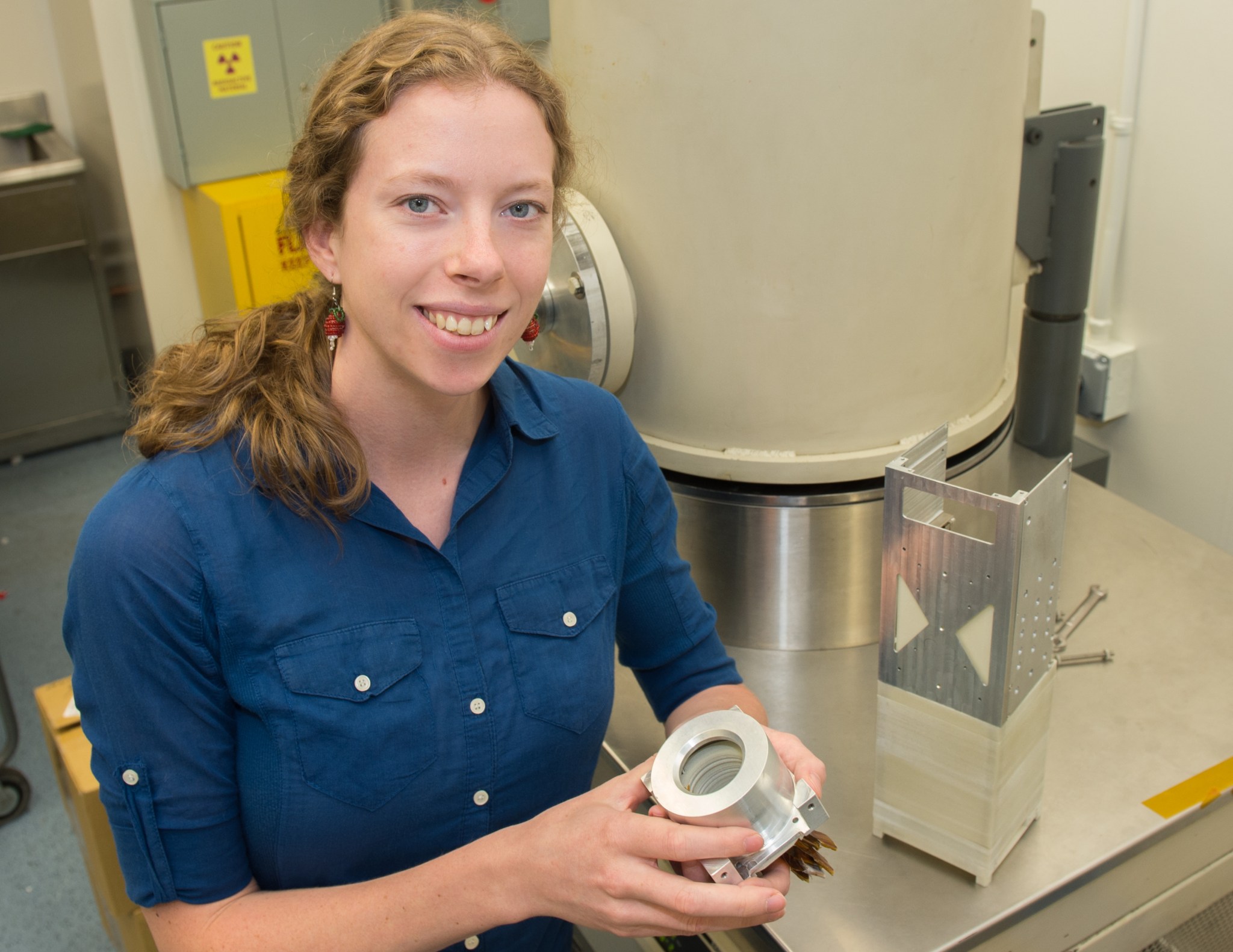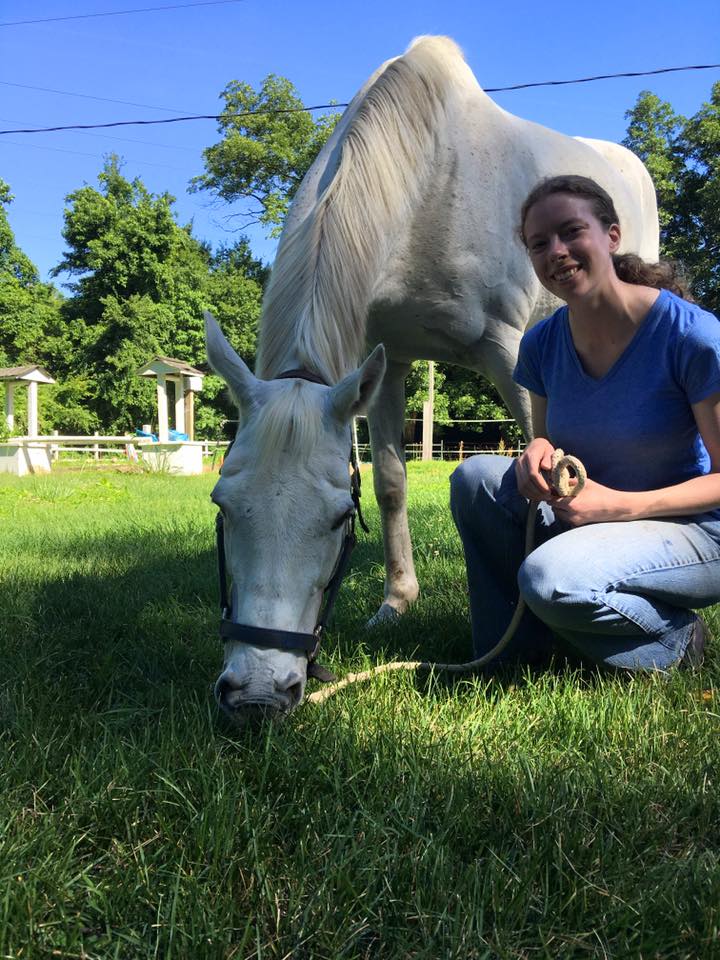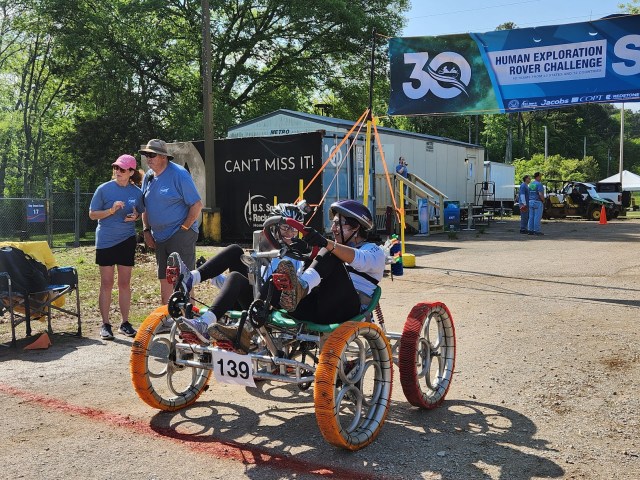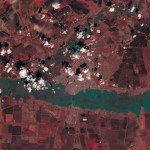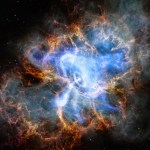Name: Allison Evans
Formal Job Classification: Mechanical Engineer
Organization: Code 596, Components and Hardware Branch, Applied Engineering and Technology Division
What do you do and what is most interesting about your role here at Goddard? How do you help support Goddard’s mission?
I build boxes for a living. I build the boxes that enclose the brains of the spacecraft, the electronics boards and I make sure that the boards do not shake apart during launch or get too hot or too cold in space. Recently I have been building CubeSats which are tiny spacecraft about the size of a loaf of bread or a shoebox. The advantage of using CubeSats is that they cost much less to launch because there is so much less mass going up into space. I call CubeSats the cell phones of spacecraft because you have to miniaturize everything.
What else is unique about building CubeSats?
The teams are much smaller. A regular spacecraft team could have hundreds of people, but a CubeSat could have just 10 or so people as the core team. Working on a CubeSat has allowed me to have a lot more responsibility. I am the mechanical engineer for the Compact Radiation Belt Explorer (CeRES) CubeSat. CeRES will study how electrons are energized and lost around the Earth’s radiation belts. We are still in the process of building CeRES.
Do you expand your small team on occasion?
It is always good to double check your work with another set of eyes. Every time I complete a big task, I like to ask another expert to take a look. I want to avoid working in a vacuum.
When did you know you wanted to be an engineer working on spacecraft?
When I was little, I read a lot of books about planets, spacecraft and the shuttle, but I always thought I would be an artist. In high school, my guidance counselor convinced me to take calculus. I loved it and was good at it. My calculus teacher suggested that I become an engineer. I then figured out that I could use my creativity to make engineering designs so I could do both.
Where did you go to school?
I grew up in northern Maryland and went to high school in the eastern panhandle of West Virginia. I got a bachelor’s in aerospace engineering at West Virginia University and got a master’s in aerospace engineering at the Georgia Institute of Technology.
How do you combine your artistic vision with engineering design?
I mostly design structures. Trying to figure out how the pieces will fit with each other and align properly involves a lot of thinking about turning shapes around in your head. Envisioning how something will look when viewed from different angles requires an artistic eye. I try not to make things unnecessarily clunky. It saves mass as well.
When did you first become involved with CubeSats?
When I was at Georgia Tech working on my master’s, I worked on the Prox-1 NanoSat, which will launch carrying a CubeSat as its payload and then deploy and track the CubeSat. Prox-1 is about the size of a microwave. I designed the structure of the NanoSat and how all the subsystems and components will interface with it. I also figured out how to attach the CubeSat deployer to the NanoSat structure.
What brought you to Goddard?
I came to Goddard as an intern while in college. I first interned at NASA’s Langley Research Center in Hampton, Virginia, and then spent four more summers at Goddard first as an intern and later as a co-op. I worked two summers in the heliophysics area and two summers in the components and hardware branch when I now work full-time.
These summers at Goddard gave me a chance to see what engineering is like as a career and also helped me make the connections that I needed later. Working with both scientists and engineers as mentors has given me a broader perspective.
Did you work on a CubeSat while interning at Goddard?
While a Goddard intern, I worked on the Firefly CubeSat, which studied terrestrial gamma ray flashes (TGFs). It was cool because there was a science fiction TV series on at the time called “Firefly,” which I liked too. Although only an intern, I was allowed to design an instrument interface for the gamma-ray detector. Engineers later heavily modified my design, but at least I got to design something and learn a lot about mechanical drawing and designing for CubeSats. I never could have learned any of these things in a regular classroom.
Did you work with sounding rockets too while an intern?
Yes, I worked on the Visualizing Ion Outflow via Neutral atom imaging during a Substorm (VISIONS) sounding rocket when I was an intern. VISIONS launched in 2013 and now studies the auroral wind. Once again my design didn’t quite make it to launch, but I did get to go to Poker Flat Research Range in Alaska in the middle of February to the sounding rocket launch!
Sounding rockets are only in flight for a few minutes before coming back down to Earth, so to study the aurora we had to wait for just the right moment to launch. It meant a lot of waiting. My job was to monitor temperatures on one of the instruments. It was night shift work because the aurora is at night, so I was exhausted the whole week but also really excited to be there. When the rocket finally went off it shook the whole building!
What about your work on a balloon mission?
I worked on the Balloon Experimental Twin Telescope for Infrared Interferometry (BETTII), which will be flying the fall of 2016. I designed and analyzed the exoskeleton, which is the structure that all of the bus components, such as the batteries and the communications equipment, sit on and to which the instrument itself is attached. BETTII will study astrophysics targets such as star-forming regions of galaxies and look at them in the infrared spectrum.
BETTII is the size of a bus and the exoskeleton is roughly the size of a car. It is the biggest thing I’ve designed so far. The design process is the same as for the tiny CubeSats though!
What do you learn when your designs are not used?
Every time I design something I get better at anticipating future design challenges. What might take me a few days to puzzle through the first time I see it takes minutes the second time because I have already solved a similar problem. My designs that don’t fly still impact the ones that I later do get into space.
Each engineer ends up with their own “signature” way of modeling things, which is based on their past successes combined with the input of engineers around them. Ten years from now my designs will be better than they are today and that is part of what keeps me excited about my job.
Please tell us about your patent pending.
I am in the process of obtaining a patent, which is now officially patent-pending, on CubeSat thermal louvers. Thermal louvers are used for controlling the temperature of the components inside a spacecraft. Thermal louvers were designed for big spacecraft way back in the ’70s, but did not yet exist for small spacecraft like CubeSats. My patent will be for miniaturizing the thermal louver technology. I hope CubeSats will eventually use my design. Goddard’s Dellingr CubeSat, which is currently in the testing phase, will demonstrate my technology. Going through the process of patenting has been challenging, but I saw a need for more varied thermal control in the future of CubeSats and went for the opportunity.
Do you consider yourself an artist?
Yes, I continue doing all kinds of arts and crafts. I draw and also paint in acrylics. I focus a lot on nature, such as trees and other woodland scenes. I also make earrings out of polymer clay and sometimes beads. Today I am wearing radish earrings I designed and made out of beads and wire which are from my last Halloween costume as Luna from “Harry Potter.”
What is your “six-word memoir?” A six-word memoir describes something in just six words.
Don’t be afraid to be weird.
Is there anything else interesting about you that most people do now know?
After work, I volunteer at The Big Purple Barn, a horse rescue center in Bowie. Many of the horses were rescued from auction or abusive situations, so I’m glad to help give them better lives.
I had always liked horses. As a kid living in rural Maryland, I saw horses in fields all of the time. My parents never gave me the pony I requested though. Now that I’m an adult, I decided to try being around horses rather than admiring them from across a field.
I am learning how to handle horses, what they eat, how to tell if one is sick and how to take care of them. The people there are really fun to be around as well.
I’m not going to lie, I muck out a lot of stalls. I never thought I’d make friends, equine and human, while chatting over a pile of horse poo, but I have!
By Elizabeth M. Jarrell
NASA’s Goddard Space Flight Center, Greenbelt, Md.

Conversations With Goddard is a collection of Q&A profiles highlighting the breadth and depth of NASA’s Goddard Space Flight Center’s talented and diverse workforce. The Conversations have been published twice a month on average since May 2011. Read past editions on Goddard’s “Our People” webpage.





























